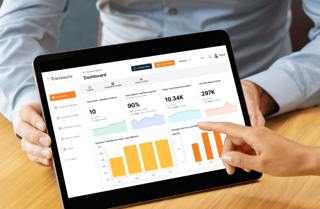Artificial intelligence (AI) and a supercomputer have been used by Microsoft to find a new substance which could power electric vehicle (EV) batteries.
Working with the Pacific Northwest National Laboratory (PNNL), which is part of the US Department of Energy, Microsoft’s Azure Quantum team says the material could potentially reduce lithium use by up to 70%.
It used advanced AI to narrow down 32 million potential inorganic materials to 18 promising candidates in less than a week - a screening process that could have taken more than two decades to carry out using traditional lab research methods.
The process from inception to the development of a working battery prototype took less than nine months.
Since its discovery the new AI-derived material, which at the moment is called N2116, has been used to power a lightbulb.
Dr Nathan Baker, product leader, for Azure Quantum Elements at Microsoft, said: “Joining forces with the Department of Energy’s Pacific Northwest National Laboratory, the Azure Quantum team applied advanced AI along with expertise from PNNL to identify a new material, unknown to us and not present in nature, with potential for resource-efficient batteries.
“Not only that, PNNL scientists synthesised and tested this material candidate from raw material to a working prototype, demonstrating its unique properties and its potential for a sustainable energy-storage solution, using significantly less lithium than other materials announced by industry.”
Baker explains this is important for many reasons. “Solid-state batteries are assumed to be safer than traditional liquid or gel-like lithium batteries, and they provide more energy density,” he said.
“Lithium is already relatively scarce, and thus expensive. Mining it is environmentally and geopolitically problematic.
“Creating a battery that might reduce lithium requirements by approximately 70% could have tremendous environmental, safety, and economic benefits.”
The discovery of this new type of electrolyte material is notable not only for its potential as a sustainable energy-storage solution, but also because it demonstrates that researchers can dramatically accelerate time to results with advanced AI models.
Baker said: “The discovery of other materials that could increase the sustainability of energy storage is likely on the horizon.”























Login to comment
Comments
No comments have been made yet.